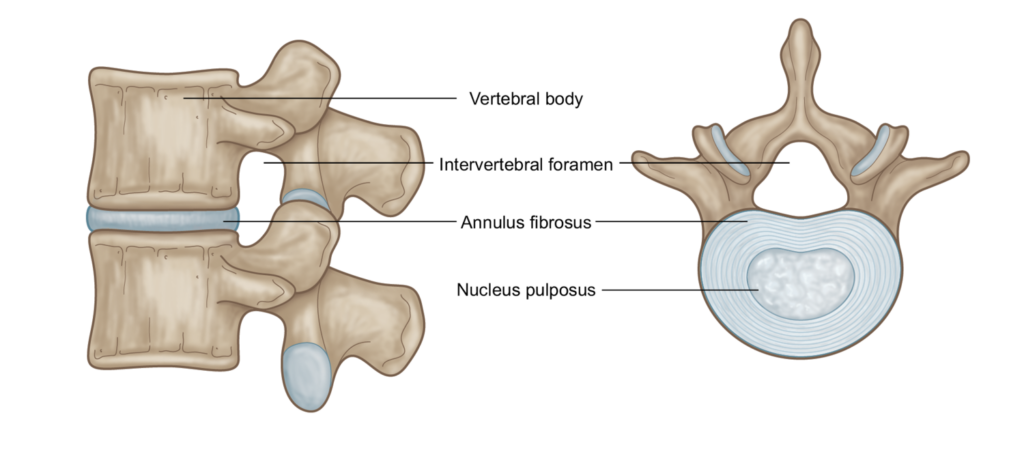The spine is a remarkable structure that provides support, flexibility, and protection to the spinal cord and nerves. It’s hard to do anything really without engaging your spine. At the core of its mobility and shock absorption are the intervertebral discs—vital structures located between each vertebra that play an essential role in spine health.
What is an Intervertebral Disc?
An intervertebral disc acts as a cushion and spacer between the vertebrae, absorbing shock and allowing flexibility in the spine. Each disc is predominantly composed of two key components:
1. Annulus Fibrosus
• The annulus fibrosus is the tough, outer ring of the disc.
• Made of multiple layers of fibrous tissue, it provides strength and stability to the spine.
• Its structure helps contain the inner core and evenly distribute pressure across the disc.
2. Nucleus Pulposus
• The nucleus pulposus is the gel-like inner core of the disc.
• It’s rich in water content, which gives it its shock-absorbing properties.
• This soft center allows the disc to compress and rebound with movement.

How Do They Work Together?
When you move, bend, or lift, the annulus fibrosus holds the disc in place, while the nucleus pulposus absorbs and redistributes pressure. This teamwork prevents excessive strain on the vertebrae and reduces the risk of injury.
Why is Disc Health Important?
Over time, discs can degenerate due to aging, poor posture, or injury, leading to conditions like herniated discs or degenerative disc disease. Maintaining proper posture, staying active, and adequate hydration are essential for disc health.
Good sleep habits are also vital for disc health. While you are sleeping at night your discs rehydrate in preparation for the wear and stress from new days activities. Actually, if you measure your height you will be tallest when you first get up and you gradually shrink during the day until your discs rehydrate again the following night. Poor sleeping habits reduce the amount of time discs have to regenerate
Understanding the anatomy of intervertebral discs helps us appreciate their role in spinal health and mobility. By caring for your spine, you’re protecting these small yet powerful structures for years to come.

